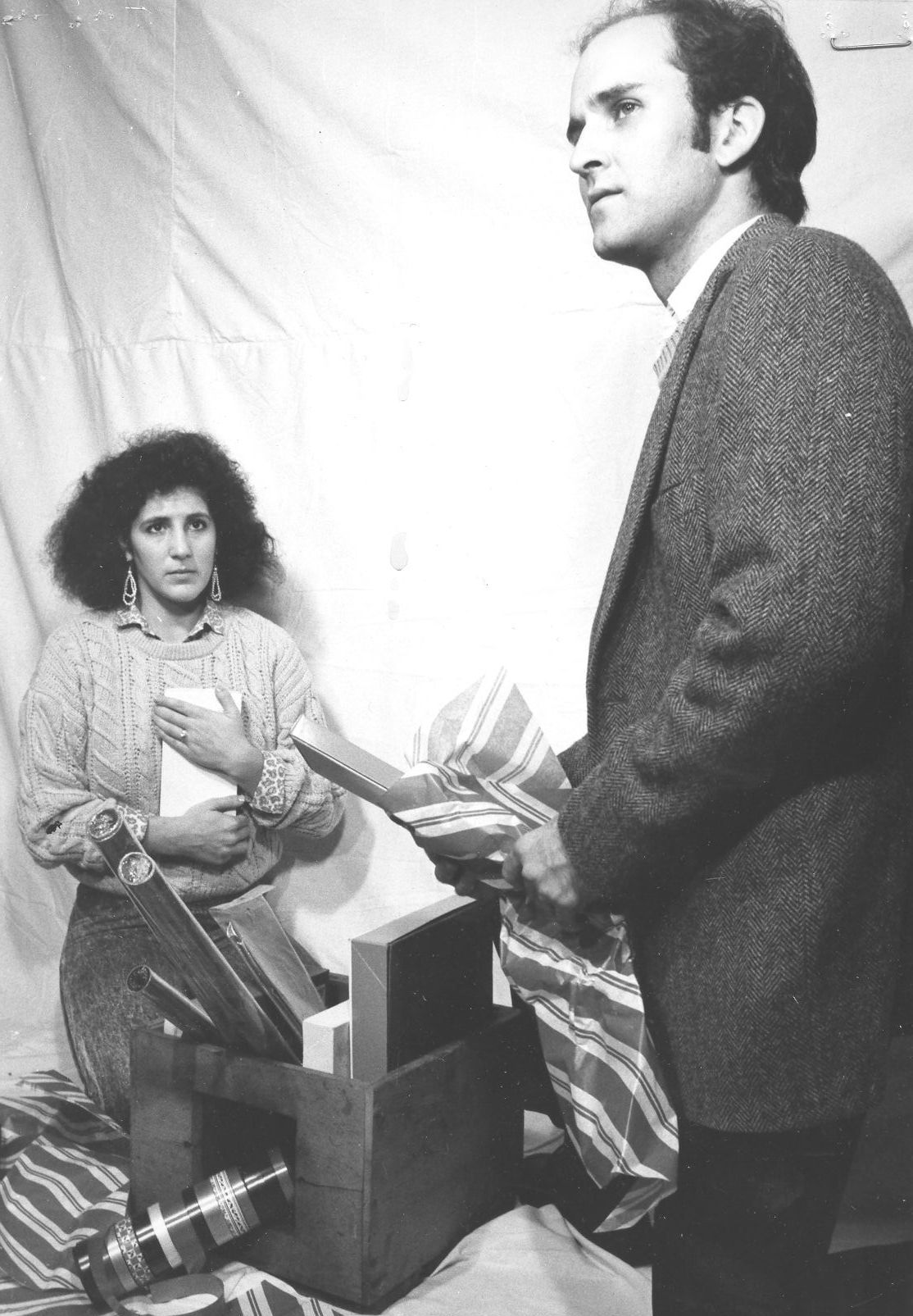


IN HIS OWN IMAGE
Centuries ago, in Henry Adam’s view, Western Civilization was stable and morally unified; it could be characterized by the luminous windows endlessly adoring the Madonna in Chartres Cathedral. By the beginning of the 20th century, Adams says, our stability, our moral unity, had been lost in a maddening rush toward change; we were in an electric dynamo spinning in an ever-accelerating whirl.
Wouldn’t it be comforting now to have the time to sit and appreciate a ponderous novel about long ago? Or to lie on your back in a candle-lit church and appreciate the resounding “Mass in B-Minor” by Bach?
Jeff Helgeson’s In His Own Image could be a lengthy novel – all about what Steve lost, and what he gained because he lost; all about what Michelle gained, and what she lost because of what she gained; all about Jerome both gaining and losing. But Helgeson is a playwright, and he understands the late 20th century. In His Own Image gives us tiny, fragmented windows into scenes; a whole year, an entire relationship with developing personalities rush past us in about forty minutes. So much happens between the scenes, even between the lines, where we and the actors are teased to fill in meanings – to create our own novel from what we see and what Helgeson knows we know about life. The pace is relentless, especially when all the open spaces that might be silences are filled with the background sounds of modern life, especially when the church organ that we do briefly hear is replaced by the high whine of a jet engine, and most especially when the last sound we hear is that of “Material Girl” by the 20th Century’s “Madonna,” a far cry from the inspiration at Chartres.
Allan Bates
Drama Chairperson, Northeastern Illinois University
